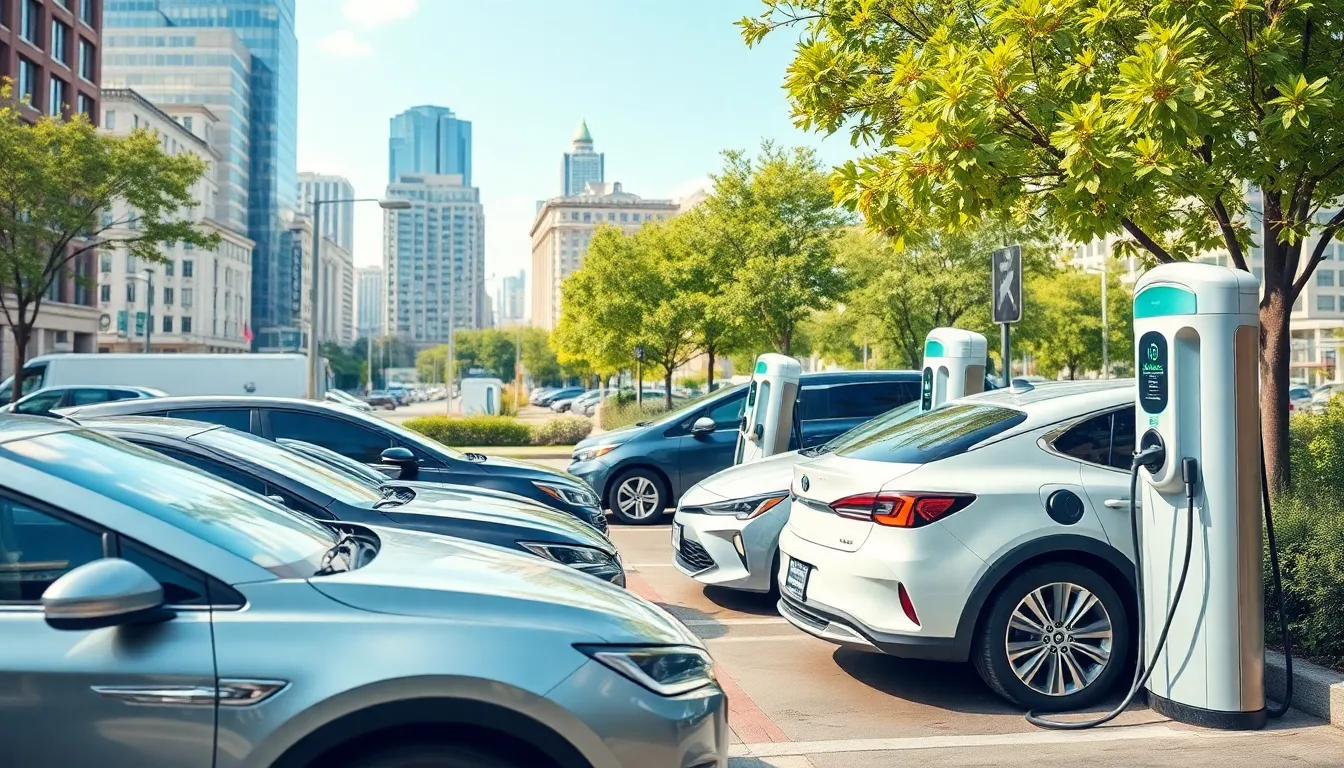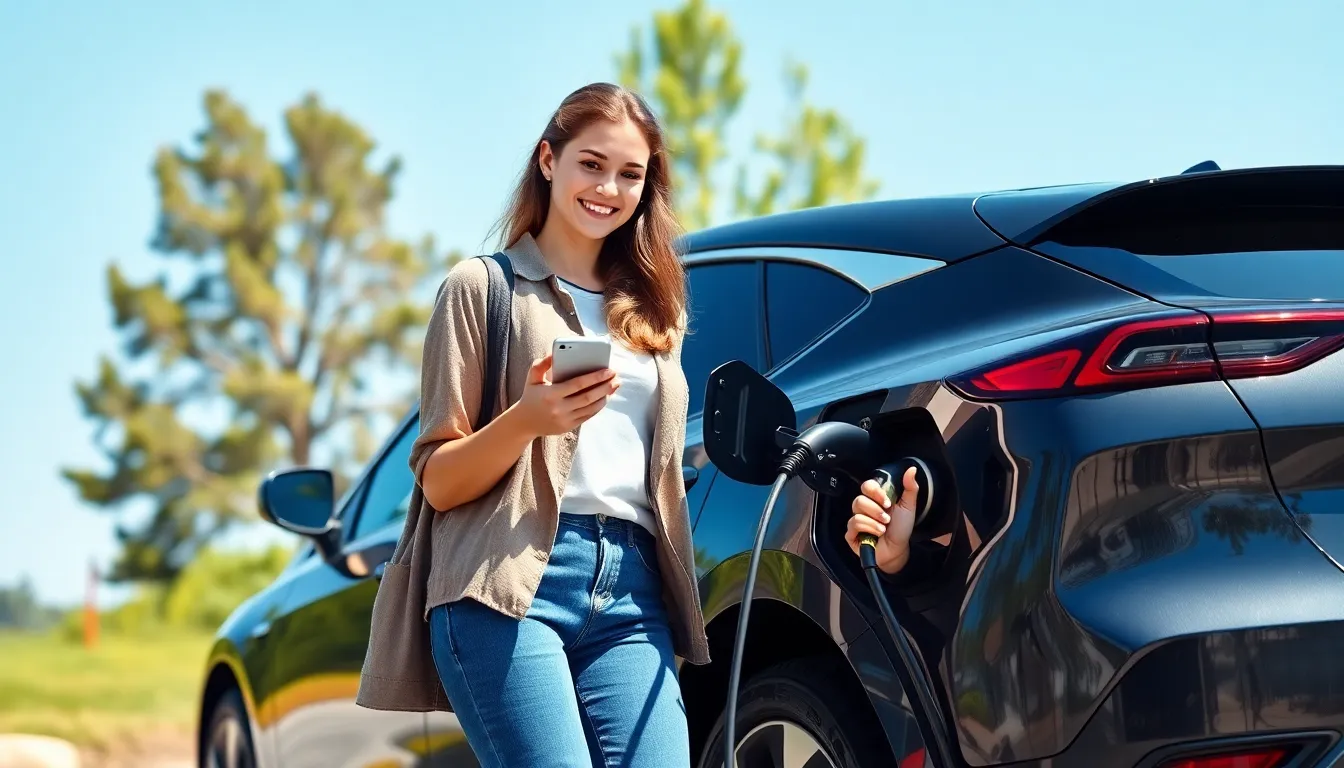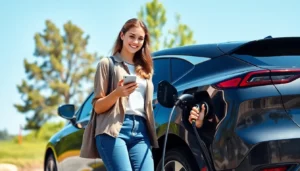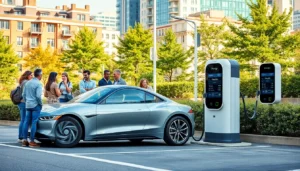The electric vehicle revolution is here, and it’s charging ahead faster than a kid on Christmas morning. With the world waking up to the environmental benefits and cost savings of EVs, it’s no wonder they’re becoming the hottest trend on the road. Gone are the days of gas-guzzling engines and exhaust fumes; today’s drivers are embracing a cleaner, greener future while looking pretty stylish doing it.
From sleek designs to cutting-edge technology, electric vehicles are not just eco-friendly—they’re also packed with features that make driving feel like a scene from a sci-fi movie. With advancements in battery life and charging infrastructure, the fear of being stranded with a dead battery is becoming as outdated as dial-up internet. Buckle up as we explore the latest trends in the electric vehicle landscape that are revving up excitement and reshaping the way people think about transportation.
Table of Contents
ToggleOverview of Electric Vehicle Trends
Electric vehicles (EVs) continue to gain popularity as consumers recognize their advantages. Enhanced battery technology leads the trend, offering longer ranges and shorter charging times. As battery efficiency improves, manufacturers can produce models that cater to diverse consumer needs.
Charging infrastructure also sees significant advancements. Public charging stations expand, making EVs more accessible. Fast charging options reduce downtime, addressing previous concerns about range anxiety.
Sustainability drives many trends in the electric vehicle market. Countries worldwide implement stricter emissions regulations, encouraging manufacturers to innovate. In response, many brands are committing to full electrification in the coming years.
Stylish designs in electric vehicles become more mainstream. Automakers focus on aesthetics and performance, attracting a broader audience. The integration of advanced technology into EVs enhances the driving experience, featuring smart connectivity and driver-assistance systems.
Financial incentives play a crucial role in EV adoption. Governments provide tax credits and rebates to lower initial costs. This financial support makes EVs an appealing option for more consumers.
Market competition continually rises, with new entrants challenging established brands. Startups are introducing unique models, offering variety and fostering healthy competition. A dynamic landscape ensures that consumers benefit from innovative features and competitive pricing.
Consumer awareness campaigns successfully educate the public on the benefits of EVs. Organizations and governments promote the advantages of adopting electric vehicles. Increased knowledge leads to a more informed customer base, further driving market growth.
Market Growth and Projections

Electric vehicle (EV) sales continue to surge, reflecting a significant shift in consumer preferences and environmental awareness. This increase indicates a robust market landscape primed for further expansion.
Global Sales Statistics
In 2022, global sales of electric cars reached 10 million units, marking a 55% increase from the previous year. The International Energy Agency confirmed that EVs accounted for 14% of total car sales worldwide. Notably, China remains the leader, representing over 60% of the global market, while Europe and the United States also show remarkable growth. Projections suggest that by 2030, EV sales could reach 30 million units annually, propelling the total number of electric cars on the road past 200 million.
Regional Trends and Insights
North America and Europe are experiencing significant shifts in electric vehicle adoption. In the United States, sales tripled in 2022, driven by federal incentives and rising gas prices. Europe follows closely with countries like Norway leading the charge, where over 50% of new car sales are electric. Market projections indicate that Asia will outperform other regions as manufacturers increase investments in electric technologies. By 2025, emerging markets, particularly in Southeast Asia, could become crucial players in the global EV landscape, reshaping regional dynamics.
Technological Advancements
Technological advancements play a crucial role in the ongoing evolution of electric vehicles. Innovations such as improved battery technology and autonomous driving features are driving the market forward.
Battery Technology Innovations
Battery technology is at the forefront of the electric vehicle revolution. Enhanced energy density allows batteries to store more energy, leading to longer driving ranges. Faster charging capabilities reduce downtime, with many models offering quick charging options under 30 minutes. Solid-state batteries are emerging as a game changer, providing higher efficiency and safety. With global EV sales reaching 10 million in 2022, advancements in this area are critical. Manufacturers are aggressively pursuing research and development to stay competitive and meet growing consumer demand.
Autonomous Driving Features
Autonomous driving features are gaining traction in electric vehicles. Advanced driver-assistance systems, such as lane-keeping assist and adaptive cruise control, enhance safety and convenience. Many vehicles now offer semi-autonomous capabilities, allowing for hands-free driving in certain conditions. Ongoing improvements in sensor technology and artificial intelligence lead to more reliable and efficient systems. As awareness increases, consumer expectations for these features are also rising. With trends showcasing a shift toward smart mobility, integrating autonomous capabilities into EVs is essential for attracting tech-savvy consumers.
Consumer Behavior and Preferences
Consumer behavior is evolving as electric vehicles gain traction. A noticeable trend focuses on younger buyers prioritizing sustainability and advanced technology. Increased access to information about environmental benefits influences purchasing decisions. EV buyers often consider total cost of ownership and long-term savings associated with reduced fuel and maintenance expenses. The integration of stylish designs and modern features enhances appeal, attracting a diverse customer base.
Shifts in Buying Patterns
Shifts in buying patterns spotlight the growing comfort with EVs. A significant number of consumers now view electric vehicles as viable alternatives to traditional cars. Data shows that U.S. sales tripled in 2022 due to federal incentives and rising fuel prices. Younger demographics lead this change, valuing eco-friendliness alongside functionality. Preferences also shift toward online purchasing, as digital platforms simplify the buying process for consumers seeking EVs.
Impact of Charging Infrastructure
An improved charging infrastructure significantly impacts consumer preferences. The expansion of public charging stations alleviates range anxiety, making EV ownership more appealing. Fast charging options have emerged, allowing drivers to recharge quickly during trips. Studies indicate that easy access to charging stations influences consumer comfort levels with EV adoption. Charging availability is becoming a critical factor for potential buyers evaluating EV options.
Environmental Impact and Sustainability
Electric vehicles play a crucial role in promoting sustainability and reducing environmental impact. Their popularity stems from a strong focus on minimizing carbon emissions and enhancing energy efficiency.
Carbon Footprint Reduction
EVs significantly reduce carbon footprints compared to traditional gas-powered vehicles. Studies show that electric vehicles can produce up to 70% fewer emissions over their lifetime, especially when charged from renewable energy sources. The shift from fossil fuels to electric power enables cities to improve air quality and lower greenhouse gas levels. Growth in the charging infrastructure supports this shift, making it easier for users to charge their vehicles sustainably. As more countries adopt stricter emissions regulations, EV adoption rates continue to rise, contributing to the overall reduction of harmful pollutants.
Lifecycle Analysis of Electric Vehicles
A comprehensive lifecycle analysis reveals that electric vehicles, despite higher initial manufacturing emissions, ultimately result in lower total emissions. The production phase generates notable emissions, largely due to battery manufacturing. However, over time, the operational benefits of EVs lead to significantly lower emissions in comparison to internal combustion engines. Moreover, advancements in battery recycling and sustainable materials are helping reduce the environmental impact further. In essence, EVs present a more sustainable option when examining the entire lifecycle, from production to disposal, emphasizing their role in future transportation solutions.
Conclusion
Electric vehicles are reshaping the automotive landscape with their rapid growth and innovative features. As consumers become more aware of the environmental benefits and cost savings associated with EVs, the market continues to expand. Enhanced battery technology and improved charging infrastructure are addressing previous concerns, making EV ownership more accessible than ever.
The increasing competition among manufacturers is driving advancements in design and technology, appealing to a broader audience. With sustainability at the forefront of consumer preferences, electric vehicles are not just a trend but a pivotal part of the future of transportation. As the industry evolves, it’s clear that the shift towards electrification is set to accelerate, paving the way for a cleaner and more efficient driving experience.










